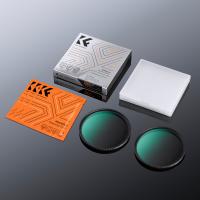How Light Microscope Works?
A light microscope works by using visible light to magnify and resolve small objects. The light passes through a condenser lens, which focuses the light onto the specimen. The light then passes through the specimen and is magnified by the objective lens. The magnified image is then further magnified by the eyepiece lens, which allows the viewer to see the specimen in greater detail. The resolution of the microscope is determined by the wavelength of the light used and the numerical aperture of the lenses. Light microscopes are commonly used in biology and medicine to study cells and tissues.
1、 Basic principles of light microscopy

How light microscope works:
Light microscopy is a widely used technique in biological research that allows scientists to observe and study cells and tissues at the cellular level. The basic principle of light microscopy is the use of visible light to illuminate a sample and magnify the image using lenses.
The light microscope consists of several components, including a light source, condenser lens, objective lens, and eyepiece. The light source provides illumination, which is focused by the condenser lens onto the sample. The objective lens then magnifies the image, and the eyepiece further magnifies the image for the observer.
The resolution of a light microscope is limited by the wavelength of visible light, which is around 400-700 nm. This means that structures smaller than this cannot be resolved. However, advances in technology have allowed for the development of super-resolution microscopy techniques, such as stimulated emission depletion (STED) microscopy and structured illumination microscopy (SIM), which can achieve resolutions beyond the diffraction limit of light.
In addition to traditional brightfield microscopy, there are several other types of light microscopy, including fluorescence microscopy, confocal microscopy, and multiphoton microscopy. Fluorescence microscopy uses fluorescent dyes to label specific structures or molecules within a sample, allowing for visualization of specific cellular components. Confocal microscopy uses a laser to scan a sample in a series of thin sections, producing a 3D image. Multiphoton microscopy uses longer wavelength light to penetrate deeper into tissues, allowing for imaging of thicker samples.
Overall, light microscopy remains a powerful tool in biological research, allowing scientists to visualize and study the intricate structures and processes of cells and tissues.
2、 Components of a light microscope

How light microscope works:
A light microscope works by using visible light to magnify and focus on a sample. The light passes through a series of lenses, which bend and focus the light to create a magnified image of the sample. The lenses in a light microscope are typically made of glass or plastic and are arranged in a specific order to create the desired magnification.
The sample is placed on a slide and illuminated from below with a light source, such as a bulb or LED. The light passes through the sample and is then focused by the lenses to create an image that can be viewed through the eyepiece or on a computer screen.
Components of a light microscope:
The main components of a light microscope include the eyepiece, objective lenses, stage, focus knobs, and light source. The eyepiece is the lens that the viewer looks through to see the magnified image. The objective lenses are the lenses closest to the sample and are used to adjust the magnification. The stage is the platform on which the sample is placed and can be moved up and down to focus the image. The focus knobs are used to adjust the focus of the lenses to create a clear image. The light source is used to illuminate the sample and create a visible image.
The latest point of view:
In recent years, advancements in technology have led to the development of digital microscopes, which use digital cameras and computer software to create high-resolution images of samples. These microscopes can be used to capture and analyze images in real-time, making them useful for a wide range of applications, including medical research, environmental monitoring, and quality control in manufacturing. Additionally, new techniques such as confocal microscopy and super-resolution microscopy have allowed for even higher levels of magnification and resolution, enabling researchers to study biological processes at the molecular level.
3、 Types of light microscopes

How light microscope works:
A light microscope works by using visible light to magnify and focus on a sample. The light passes through a series of lenses, which refract and focus the light onto the sample. The sample is then magnified and projected onto a viewing screen or eyepiece for observation.
The resolution of a light microscope is limited by the wavelength of visible light, which is around 400-700 nanometers. This means that the smallest structures that can be observed with a light microscope are around 200 nanometers in size.
Types of light microscopes:
There are several types of light microscopes, including:
1. Compound microscope: This is the most common type of light microscope, which uses two or more lenses to magnify the sample.
2. Stereo microscope: This type of microscope provides a three-dimensional view of the sample, making it useful for examining larger objects.
3. Fluorescence microscope: This type of microscope uses fluorescent dyes to label specific structures within the sample, allowing them to be visualized under UV light.
4. Confocal microscope: This type of microscope uses a laser to scan the sample in a series of thin slices, which are then reconstructed into a three-dimensional image.
5. Super-resolution microscope: This is a newer type of light microscope that uses advanced techniques to overcome the resolution limit of visible light, allowing structures as small as 20 nanometers to be observed.
In recent years, there has been a growing interest in developing new types of light microscopes that can provide even higher resolution and more detailed images of biological structures. These advances are helping to push the boundaries of our understanding of the microscopic world and are opening up new avenues for research in fields such as cell biology, neuroscience, and materials science.
4、 Sample preparation for light microscopy

How light microscope works:
A light microscope works by using visible light to magnify and focus on a sample. The light passes through the sample and is refracted by the lenses in the microscope, which magnify the image and project it onto the eyepiece or camera. The resolution of a light microscope is limited by the wavelength of visible light, which is around 400-700 nanometers.
Sample preparation for light microscopy:
Sample preparation for light microscopy involves several steps to ensure that the sample is properly prepared for observation. The first step is fixation, which involves preserving the sample in a way that maintains its structure and prevents decay. This can be done using chemicals such as formaldehyde or glutaraldehyde.
The next step is dehydration, which involves removing water from the sample to prevent distortion during observation. This is typically done using a series of alcohol washes.
The sample is then embedded in a medium such as paraffin or resin, which provides support and allows for thin sectioning. Thin sections are then cut using a microtome and mounted onto a glass slide.
Staining is often used to enhance contrast and highlight specific structures within the sample. Different stains are used depending on the type of sample and the structures of interest.
The latest point of view in sample preparation for light microscopy is the use of advanced imaging techniques such as super-resolution microscopy, which can achieve resolutions beyond the diffraction limit of visible light. This allows for the observation of structures at the nanoscale level, providing new insights into cellular processes and disease mechanisms. Additionally, there is a growing trend towards the use of live cell imaging, which allows for the observation of dynamic processes in real-time. This requires specialized sample preparation techniques to maintain cell viability and prevent phototoxicity.






























There are no comments for this blog.